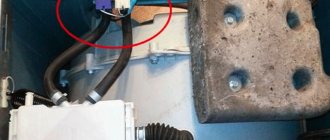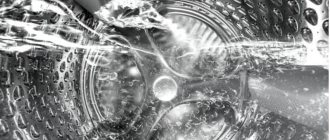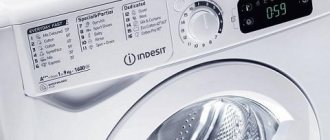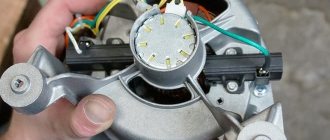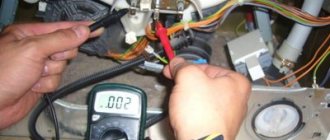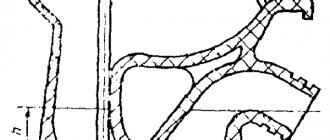It is very difficult to imagine a modern apartment without an automatic washing machine. This household invention has become a reliable assistant for housewives who can simply load dirty laundry, set the required washing mode, turn on the unit and do other household chores. The assistant will do all the work independently and automatically.
But any household appliance is not immune to the occurrence of various malfunctions, which can bring a lot of concern to users. Therefore, if you find that the washing machine is constantly taking in water, you need to establish the cause of the possible breakdown and decide how to fix it. Delay in solving this problem can lead to more serious troubles.
Possible consequences of a malfunction
During operation, the machine can draw water at least twice, since any mode involves the washing process itself, as well as rinsing the laundry. Of course, depending on the selected operating mode, the number of cycles of adding and draining water may increase, which is a normal technological process. Concern should arise when the washing machine constantly fills with water, which is one of the most unpleasant and dangerous breakdowns.
When the drainage system is functioning correctly, the unit will remove water from the tank. But if the drain is clogged, the electronic control may fail or flood the neighboring residents. In addition to economic losses (increased water consumption), this situation leads to a heavy load on the main components and parts of the machine, which causes their premature wear. Especially if the Indesit washing machine constantly takes in water, the heating element suffers, which is connected very often.
In any case, operating a washing machine with uncontrolled filling of water is prohibited, as this may cause damage to other components of the unit.
Damage to the inlet (fill) valve
When diagnostics show that the pressure switch and associated parts are working properly, the cause of the uncontrolled drainage of water may lie in a malfunction of the inlet valve. Due to prolonged use, the valve's membrane may weaken, which leads to liquid leakage even when it is closed. Also, the valve may fail and not shut off the water at all. In this case, a situation similar to an incorrectly connected machine is repeated - the water from the tank is constantly decreasing, as a result of which the pressure switch gives constant signals about the need to fill the tank and the circle is closed.
Another sign of incorrect operation of the inlet valve is the situation when, even when turned off, the machine continues to draw water.
To eliminate the malfunction, the inlet valve must be replaced. Most front-loading washing machines have the inlet valve located at the rear of the unit near the top lid. You can access the part by removing the top cover. For machines with a vertical loading type, the valve should be looked for in the basement area - in the lower part of the rear wall. By separating the side wall you can gain access to the valve.
To replace this part, turn off the water and disconnect the inlet hose from the washing machine. The next step is to separate the wires leading to the valve and the hoses from its fittings. If possible, you can replace the disposable clamps installed there with worm clamps. After this, you need to unscrew the fastening screws with which the valve is fixed to the body of the washing machine. Some machine models provide for fastening the valve using a latch. You can remove the valve by retracting the latch tab and turning the valve body to the desired position. After this, the part can be removed without any hindrance. Install the new part in the reverse order.
Reasons for uncontrolled water intake
It is not difficult to notice that the Ariston washing machine constantly fills with water. After collection, the water is constantly drained into the sewer, which is accompanied by the incessant noise of the liquid being removed, and also greatly lengthens the process of washing clothes.
The most common reasons why a washing machine constantly fills with water are:
- Incorrect connection of the washing machine during installation.
- Damage to the filler (inlet) or outlet valve.
- Malfunction of the liquid level sensor (pressostat).
- Failure in the electronic control system.
Incorrect sewer connection
Particular attention should be paid to the correct connection of the washing unit during first installation or after moving the machine to another location.
A reasonable question arises: the washing machine constantly fills with water, what should I do? It is considered that the device is connected correctly if the drain hose is connected to the sewer through a siphon. The working end of the device should be located above the machine drum, i.e. at a height of about 60 cm from the floor surface. This arrangement completely eliminates spontaneous leakage of water from the tank. Otherwise, the Samsung washing machine constantly draws water, since the level sensor is triggered when the water level drops and sends a signal to the pump to pump up liquid. At the same time, the washing cycle increases in time and the quality of work suffers.
Checking the unit installation
After installing the unit, it is recommended to check that it is installed correctly. The visual method is applicable in rooms where there is free access to the elements of the drainage system.
If it is impossible to control the level of the drain hose due to natural obstacles, you can check the correct installation using an experimental method. To do this, you need to set the normal washing mode and wait until the tank is filled with water. Next, turn on the drain and set a pause after 5-7 seconds.
For some time you need to monitor the liquid level in the tank. If the water level remains at the same level, then the machine is connected correctly. An incorrect connection will be indicated by the characteristic murmur of water in the pipes.
Let's check the drain hose
Diagnostics of the Indesit washing machine should be carried out from simple to complex. First of all, it is recommended to check the connection of the machine. Most often, Indesit washing machines keep drawing water due to an incorrectly connected drain hose.
The equipment always comes with instructions that describe in detail the process of connecting the machine to house utilities. The main rule is that the drain hose must be positioned at a height of 50-60 cm from the floor. If you extend the hose lower, the water will be removed by gravity into the pipe, the pressure switch will send a signal about the empty tank to the “brain”, and the control center will give the command to fill the system with water again. And so on in a circle.
You can check if this is the reason visually - just inspect the sleeve and make sure that it is at a sufficient height. If inspection is not possible, it is possible to evaluate the position of the hose in another way:
- turn on any washing program;
- wait until the tank is full;
- start the “Drain” mode;
- In the middle of the descent, press the "Pause" button.
If the liquid continues to leave the system even when the process is paused, then the problem is definitely in the drain hose. If the water level remains the same, you will have to look for the problem further.
By the way, often the equipment comes with a special loop designed to secure the drain hose. The hose is inserted into the plastic element, thus securing it in the correct position.
Sewer blockage
Also, the washing machine constantly draws water if the general sewer is clogged. This siphon effect occurs as a result of the appearance of rarefied pressure when neighbors in the riser use the sewer. This pressure is sufficient for periodic pumping of liquid from the tank of the washing unit.
Installing a special low-power valve (anti-siphon) on the drain hose allows you to get rid of this harmful circumstance.
A temporary preventative measure is to disconnect the drain from the siphon and install it in the bathtub or sink when washing.
Level sensor fault
If the unit worked normally before, and then the LG washing machine began to constantly fill with water, it means that a part has broken down. In the design of an automatic machine, a level sensor (pressure switch) is responsible for the water level in the tank of the unit. When the tank is filled to a certain level, the sensor gives a signal and the flow of water stops.
But over time, like any electromechanical device, the sensor can fail. Causes of pressure switch malfunction:
- oxidation of connecting contacts occurs due to work in a humid environment;
- possible contact closure;
- damage or clogging of the pressure tube;
- membrane depressurization occurred.
Malfunctioning of the sensor leads to overfilling of the tank and also creates a risk of liquid leakage.
Breakdown of the pressure switch
A pressure switch is a special sensor that controls the amount of water entering the tank. After the water in the tank rises to a certain level, it enters the sensor, which turns off the flow of water. Quite often it happens that the sensor contacts oxidize or short out. Another reason for sensor failure is the loss of tightness of its membrane.
In addition to electrical wires, a pressure tube is suitable for the sensor. In most budget washing machine models, it is made of medium quality plastic. And cracks may appear on it. If such cracks are sealed, then the likelihood of normal operation is very high. The tube inside may become clogged.
The pressure switch is located on the back of the machine. Remove the back cover. If the contacts are very heavily oxidized, they should be cleaned. Very often this restores the functionality of the sensor.
We hope there is no need to warn you that before starting ANY work, you should completely disconnect the machine from the water and household power supply!
So, if no resuscitation procedures help, the part should simply be replaced. Disconnect the tube, disconnect the terminals and unscrew the screws.
Replacing the pressure switch
The level sensor is located on the tank at the rear of the machine. Therefore, to get to it, you will have to remove the cover of the unit. Next, the condition of the sensor contacts is visually assessed, and if there are traces of oxidation, mechanical cleaning is performed.
Self-replacement of the level sensor is carried out according to the following scheme:
- First, the hose going to the compression chamber is disconnected.
- Then, by unscrewing the two screws, remove the pressure switch from the housing, having previously disconnected the terminals of the device.
- We install the new sensor by tightening it with self-tapping screws.
- We connect the power terminals of the device.
- Connect the compression hose.
- We close the case with a protective cover.
Before closing the cover of the unit, you can perform a test run, on the basis of which the issue of serviceability of the system will be decided.
Valve faults
If the Ardo washing machine constantly takes in water, then you need to check the operation of the fill and drain valves. Their breakdown is most often associated with damage to the electromagnetic shutter, which is triggered by a signal from the control system. When voltage is applied to the coil winding of the device, the magnetic rod is retracted, which acts on the membrane, thereby opening the valve hole. Then, after reaching a certain water level in the tank, the power is turned off and the spring returns the membrane to the closed state.
The main causes of valve failure are:
- loss of membrane elasticity;
- failure of the coil winding;
- weakening of the spring.
Therefore, if the spring is weakened or the membrane is broken, the washing machine constantly draws water.
You can check the serviceability of the valve by connecting an external power source to it. If you hear a click, it means the valve is working normally. Otherwise, the coil winding will burn out.
To eliminate such a malfunction, the valve will have to be replaced, since its design does not involve any repair work. You can access the part by removing the top cover of the unit. The dismantling process itself is not difficult; just unscrew the screws or remove special latches, having first disconnected the power terminals. Install the valve in the reverse order.
Causes
Generally speaking, there are three main reasons why an automatic washing machine constantly draws in and releases water when it washes.
- Incorrect connection of the drain hose to the sewer.
- Failure of the filler or outlet valve.
- A malfunction associated with the sensor that controls the level of liquid that is drawn into the machine.
But it is unlikely that the above dry list of reasons that may cause the abnormal operation of the washing unit will be of any use to you. Therefore, it is worth learning in more detail how the mentioned malfunctions affect the fact that the automatic machine continuously draws in and releases working fluid.
It is considered that the device is correctly connected to the sewer system if the drain hose is connected to it not directly, but through a siphon, and its end is fixed above the working drum of the unit, that is, at a height of about 60 cm from the floor. As a rule, if the hose is lowered directly into the drain, the working tank in the washing machine is constantly filled and emptied when it starts. This problem is usually discovered immediately after installing a new, recently purchased device. Perhaps, when connecting the hose, they were guided by the principle “the simpler the better” and ignored certain requirements of the operating instructions.
We recommend: Replacing water level sensors in washing machines after checking
As for the fill and exhaust valves, their malfunction is usually associated with a solenoid valve installed inside them. This mechanism is controlled by the electronic control system in the washing machine. It initiates the application of voltage to the coil, which draws in the magnetic rod, thereby influencing the membrane, which opens the valve opening. When the filling or release of water is completed, the power to the coil is turned off and the spring returns the membrane to its original place, closing the hole. The essence of the valve malfunction may be that:
- the coil burned out,
- the membrane has lost elasticity,
- The spring became weaker.
If the spring has weakened or the filling valve membrane has deteriorated, then the washing machine will constantly fill up even when it is turned off.
The fill level sensor of the working tank in a washing machine is called a pressure switch. It reacts to changes in pressure in the system and transmits a signal to the control center, which turns the supply and drain of liquid on or off. The pressure switch can transmit incorrect signals to the “brain” of the unit if there is a blockage in the internal hydraulic circulation system of the machine that affects the pressure readings. The same result can happen if the seal is broken - for example, a crack appears in the tube connected to the pressure switch.
Incorrect operation of the control unit
A washing machine can constantly draw water if the control system, which is responsible for the proper functioning of all components of the unit, fails. In this case, the signals from the control board are sent in the wrong order, which can cause the tank to spontaneously fill with water.
In the event of such a breakdown, an error code is displayed on the control unit display, which allows you to navigate the cause of the malfunction. You can completely restart the control system by turning the unit off and on. If even after such manipulations the washing machine still constantly fills with water, then it is recommended to contact the specialists of the repair center. A malfunction of the control unit is a very big problem, since most often it is necessary to completely change the control board.
Looking at electronics
If all the previously listed reasons for the continuous supply of water into the tank are excluded, you will have to check the control module of the Indesit washing machine. The electronic unit controls the entire process, receives signals from various sensors during washing and transmits further instructions on the operation of the machine. If the control board fails, the washing machine will not be able to function properly, and the operation of the machine components will be disrupted. The main reasons why the control module is damaged:
- voltage drops in the network;
- exposure to moisture on the board;
- mechanical defect;
- natural wear and tear of the block.
If the problem lies in the “brain of the washing machine,” then it is better not to start repairs at home. Working with electronics requires certain knowledge and experience. In order not to aggravate the situation, it is recommended to seek help from a specialist.
The sooner after identifying a problem you begin to eliminate the cause, the fewer “sacrifices” you will be able to make. Postponing repairs will lead to much more serious damage to the SMA.
Interesting:
- Kandy's washing machine constantly fills with water
- The washing machine constantly fills and drains water
- The Ardo washing machine fills and immediately drains water
- LG washing machine constantly fills with water
- Whirlpool washing machine does not fill with water
- Why doesn't the Indesit washing machine fill with water?
Reader comments
- Share your opinion - leave a comment
Some tips for proper use
Trouble-free operation of any household device is possible only if the basic rules of its operation are observed. Therefore, experts recommend not to neglect simple tips:
- connect the machine with the help of specialists, according to the manufacturer’s instructions;
- ensure proper loading of laundry;
- add washing powder according to the load rate;
- It is recommended to periodically clean the connecting hoses and the unit filter.
Even though the washing machine operates in automatic mode, it is still not recommended to leave it unattended. The presence of timers and protection systems cannot guarantee the serviceability of the home assistant during a power surge.
